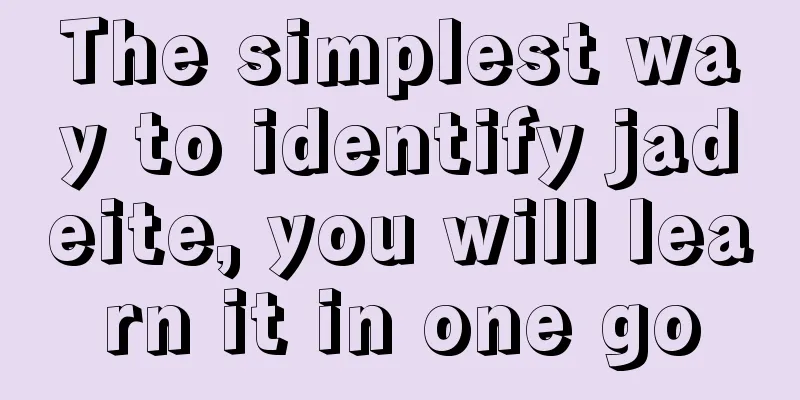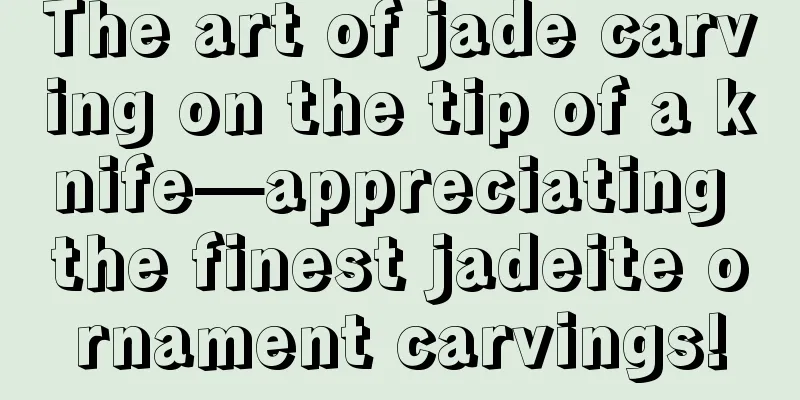If you don't understand the meaning of these jades during the Chinese New Year, you may make mistakes.

|
What do Guanyin Bodhisattva and Samantabhadra Bodhisattva respectively symbolize? What is the difference in meaning between Guanyin holding a willow branch and Guanyin holding a sutra? As one of the carriers of Chinese traditional culture, jadeite has many shapes, all of which represent specific cultural meanings. This is both a cultural heritage and people’s most simple wish. But nowadays many people know very little about traditional culture. In order to avoid misunderstandings and embarrassment when visiting relatives and friends during the Spring Festival, let us do our homework before the festival. Maitreya Buddha is the Buddha of the future and is very recognisable with a big round belly and a bright smile. He can be said to be the most common among all Buddhas. He symbolises tolerance, carefreeness, optimism and broad-mindedness, and is very down-to-earth. What are cloth bags used for? Naturally, it implies attracting wealth and fortune, and at the same time, it is straightforward, neat and not fussy about details. As the saying goes, a gentleman loves money and takes it casually. Jigong is a worldly Buddha, symbolizing wisdom and courage, resourcefulness, and the spirit of not fearing the powerful. Manjushri Bodhisattva is a symbol of great wisdom. He can open up knowledge and improve understanding. Holding the Vajra Sword of Wisdom, he can cut off all troubles. Therefore, he is often used by people to express their pursuit of happiness and a happy life. Samantabhadra Bodhisattva represents "practice", that is, doing things down to earth, and is intended to remind people to apply filial piety, respect, compassion and wisdom in their daily lives. Ksitigarbha Bodhisattva symbolizes vow power. Because of his compassionate vow of "not becoming a Buddha until hell is empty", he also symbolizes tenacity and perseverance in reality, and represents the spirit of perseverance. Guanyin Bodhisattva represents great compassion and saving people from suffering, and represents people’s yearning for a beautiful world away from suffering. In addition, there are many different common postures of Guanyin Bodhisattva, each of which has a different meaning. In addition to the two major themes of Buddha and Bodhisattva, jade also has many shapes that are close to life, each of which is quite interesting. The peace locket is also called nostalgic and arhat eye. It has a smooth and flexible shape, very similar to the shape of ancient copper coins. It conforms to the "golden mean" in Chinese traditional culture. It was called "bi" in ancient times. The ancients believed that it could ward off evil spirits and ensure safety. In modern times, it is often given to each other by lovers, relatives, and friends, symbolizing peace. Among jade ornaments, there is a type of jade pendants that have not been carved in any way. In the jade industry, there is a saying that things without any carvings are called "nothing", so this type of jade pendant borrows the meaning of "peace and no trouble" and is named "peace and no trouble" pendant, symbolizing peace and good luck. The leaf is also a jade pendant shape with rich meaning. One implies that a woman is as noble and gentle as a royal family; another implies that a man is handsome, virtuous and handsome; another implies having many children, wealth and inheritance; and another implies a blessing for a career to be successful. Gourd is also a very common jade shape. The gourd is a sacred object in Taoism and Buddhism. Legend has it that it can absorb and store the essence of all things in nature and is particularly spiritual. Therefore, wearing a gourd can ward off evil spirits and ensure safety, and it symbolizes longevity and health. Ruyi was originally a Buddhist sacred object. After Buddhism was introduced into China, it gradually became a recognized auspicious symbol among the Chinese people. It is believed to bring good luck, help people to have everything go smoothly and as they wish. The appearance of the lucky melon is simple, full and extremely round, which means a comfortable life and lots of money. In addition, the lucky melon has many seeds, which also means many children and blessings, and a continuous inheritance of wealth. Among the above exquisite jade pendants, which meaning do you prefer? Which good wish would you prefer? You can leave a message in the background to communicate with many jade friends.
fcgc66 fcpf18 |
>>: The most comprehensive explanation of the meaning of jade in history, no one else
Recommend
Have you noticed these three “little-known facts” about jadeite?
1. Why do most jades not have logos? As we all kn...
The original yellow and green jadeite stone, the jade carver revised the draft while carving, but it turned out to be a different masterpiece
Let’s first look at this piece of jadeite raw sto...
How to choose a jade ring? It's not difficult, just grasp these points
Jade rings are simple and elegant, with both the ...
The investment value of jadeite should be considered from four aspects to avoid being at a disadvantage!
At present, after more and more people have solve...
Jade appreciation often falls into seven misunderstandings, and insiders are confused
The traces of time left on jade cannot erase peop...
What kind of jade can be considered Qingshui jade?
Speaking of jade, many female friends are not imm...
Remember these 5 words and I will teach you how to choose good jadeite!
【Five tips for purchasing jadeite】 1. Color Many ...
What is the best jadeite? Top-quality jadeite has three extremes
Emerald, As the darling of nature, Spread across ...
The jade Ruyi pendant has many meanings. If you don’t understand it, it will be inappropriate to wear it randomly. How should we understand it?
As people's living standards are improving, j...
Uncover the whole process of processing jadeite raw stone to jadeite finished product
“If jade is not carved, it will not become a usef...
Multiple Matching of Jade Pendants
Jade is the king of jade and a masterpiece of nat...
High-quality jadeite sheets and the dragon-riding Guanyin with a colorful design are so beautiful even before they are polished!
The design themes of jade carvings are influenced...
Jade becomes the new favorite in the investment and financial management world! But how to discount its value?
Nowadays, people's living standards have impr...
Jade gourd, the secret hidden in time
The gourd, born in nature, has strong vitality, i...
Can you tell the difference between the three types of jade: Huaqing, Ganqing and Youqing?
There are three "brothers" in jade with...









